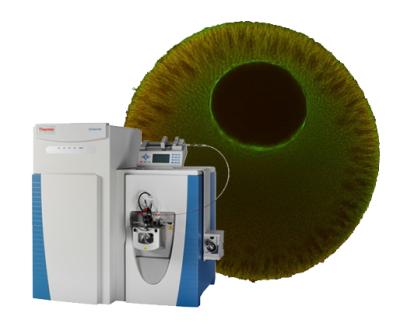Multi-Omic Analyses Provide Links between Low-Dose Antibiotic Treatment and Induction of Secondary Metabolism in Burkholderia thailandensis
Publication Year
2020
Type
Journal Article
Abstract
Low doses of antibiotics can trigger secondary metabolite biosynthesis in bacteria, but the underlying mechanisms are generally unknown. We sought to better understand this phenomenon by studying how the antibiotic trimethoprim activates the synthesis of the virulence factor malleilactone in Burkholderia thailandensis. Using transcriptomics, quantitative multiplexed proteomics, and primary metabolomics, we systematically mapped the changes induced by trimethoprim. Surprisingly, even subinhibitory doses of the antibiotic resulted in broad transcriptional and translational alterations, with ∼8.5% of the transcriptome and ∼5% of the proteome up- or downregulated >4-fold. Follow-up studies with genetic-biochemical experiments showed that the induction of malleilactone synthesis can be sufficiently explained by the accumulation of methionine biosynthetic precursors, notably homoserine, as a result of inhibition of the folate pathway. Homoserine activated the malleilactone gene cluster via the transcriptional regulator MalR and gave rise to a secondary metabolome which was very similar to that generated by trimethoprim. Our work highlights the expansive changes that low-dose trimethoprim induces on bacterial physiology and provides insights into its stimulatory effect on secondary metabolism.IMPORTANCE The discovery of antibiotics ranks among the most significant accomplishments of the last century. Although the targets of nearly all clinical antibiotics are known, our understanding regarding their natural functions and the effects of subinhibitory concentrations is in its infancy. Stimulatory rather than inhibitory functions have been attributed to low-dose antibiotics. Among these, we previously found that antibiotics activate silent biosynthetic genes and thereby enhance the metabolic output of bacteria. The regulatory circuits underlying this phenomenon are unknown. We take a first step toward elucidating these circuits and show that low doses of trimethoprim (Tmp) have cell-wide effects on the saprophyte Burkholderia thailandensis. Most importantly, inhibition of one-carbon metabolic processes by Tmp leads to an accumulation of homoserine, which induces the production of an otherwise silent cytotoxin via a LuxR-type transcriptional regulator. These results provide a starting point for uncovering the molecular basis of the hormetic effects of antibiotics.
Journal
mBio
Volume
11
Issue
1
Pages
e03210-19
Documents

